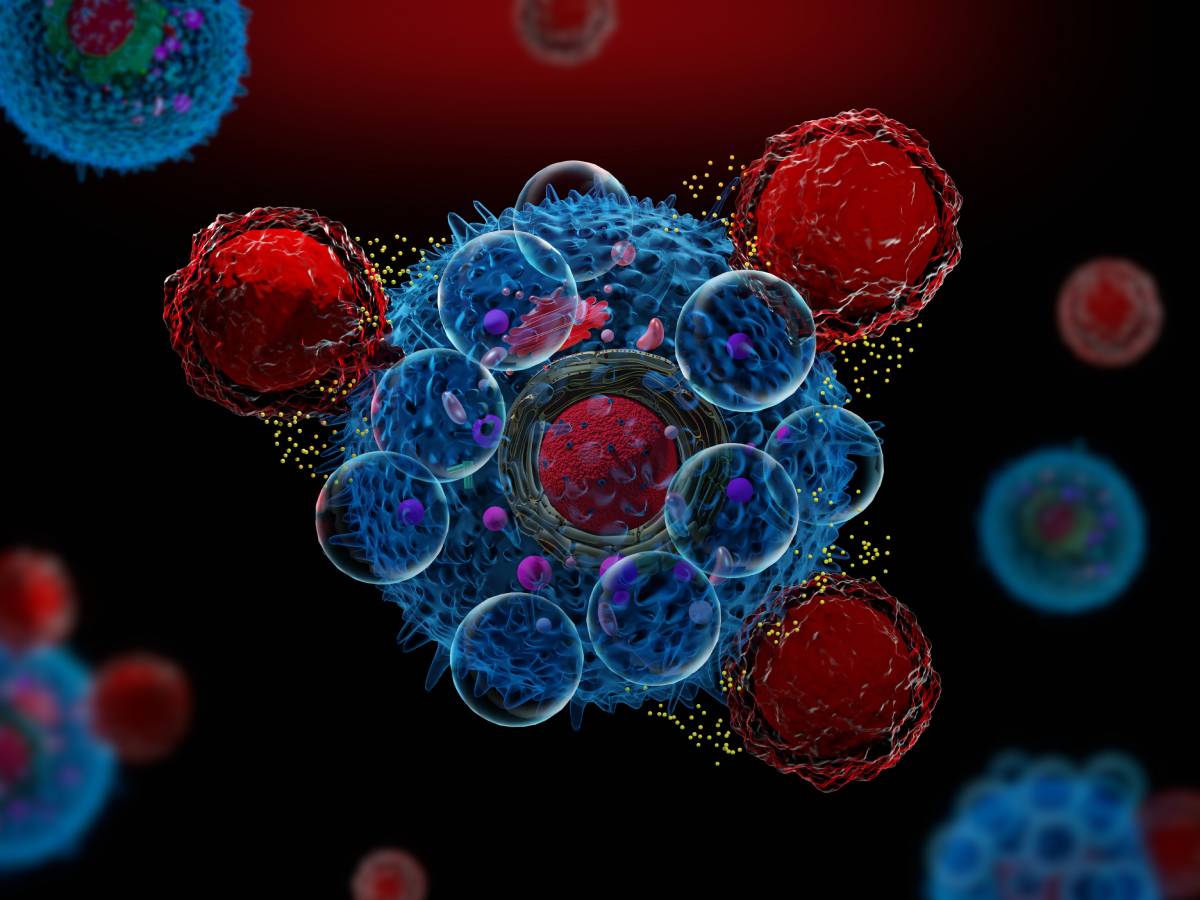Cytokines are a broad class of cell signaling peptides that exist in the extracellular environment and affect the interactions between cells [1]. Several groups of cytokines, including interleukins and tumor necrosis factors, are known to trigger inflammation in response to infection [2]. Under normal circumstances, a pathogen is bound by pattern recognition receptors, activating pathways that ultimately result in pro-inflammatory cytokine production. These cytokines target the pathogen and recruit leukocytes to the site of infection [3]. However, in the immune reaction known as a “cytokine storm,” certain factors can cause an overproduction of cytokines that may lead to sepsis and other life-threatening conditions.
The term “cytokine storm” was first used in 1993 to describe an observed immunological response in graft-versus-host disease and has since been used more commonly in reference to infectious diseases [4]. The exact physiology of the cytokine storm is still uncertain, owing largely to the complexity of the cytokine network and the numerous local and systemic effects that these molecules cause. Several classes of growth factors, however, have been strongly implicated in the auto-amplifying phenomenon of the cytokine storm. Specifically, hematopoietic targeted colony stimulating factors that are secreted during the onset of sepsis are known to induce myeloid cell differentiation and proliferation, leading to the increased production of helper T cells and amplified cytokine production [5]. Understanding the genetic basis for the cytokine storm is crucial to deciphering its physiology. Calvano et al. report that white blood cells recently exposed to an endotoxin reveal increased levels of pro-inflammatory gene expression in the 2-4 hour period after exposure and anti-inflammatory cytokine production in the 4-6 hour range; however, the team also found that some 1556 genes are involved in the global response to an endotoxin [6], so this one finding is but one of many genetic insights needed to comprehensively account for the cytokine storm.
The cytokine storm has received considerable attention in both academic and popular scientific publications in recent months due to its relation to COVID-19. Similar to the pathologies of coronavirus infections SARS and MERS, COVID-19 can lead to increases in pro-inflammatory cytokines and decreases in anti-inflammatory cytokines such as IL-10 [7]. A cytokine storm in response to SARS-CoV-2 infection can cause acute lung damage, which can then lead to acute respiratory distress syndrome, one of the major causes of COVID-19 deaths [8]. Furthermore, as reported by Kaneko et al. in Cell, cytokines may prevent the formation of germinal centers, which could impact the development of long-term immunity [9].
Preventing a cytokine storm has thus been a priority for physicians treating COVID-19 patients. Tocilizumab, a drug originally designed for rheumatoid arthritis, has markedly lowered death rates and treatment times for critically ill patients [10]. More controversial has been the use of corticosteroids and the antimalaria drugs chloroquine and hydroxychloroquine in treating COVID; while they may be able to temper the cytokine storm, potential adverse effects may outweigh this benefit [11]. Finally, convalescent plasma therapy has shown positive outcomes: antibodies from a person who has recovered from a coronavirus infection can interact with anti-inflammatory cytokines to block the complementary pro-inflammatory cytokines [12]. More research into the physiology and consequences of the cytokine storm, however, is needed to better treat patients experiencing this dangerous immune reaction.
References
1. Zhang, Jun-Ming, and Jianxiong An. “Cytokines, Inflammation and Pain.” International Anesthesiology Clinical, vol. 45, no. 2, 2007, pp. 27–37., www.ncbi.nlm.nih.gov/pmc/articles/PMC2785020/.
2. Tisoncik, J. R., et al. “Into the Eye of the Cytokine Storm.” Microbiology and Molecular Biology Reviews, vol. 76, no. 1, Mar. 2012, pp. 16–32. doi:10.1128/MMBR.05015-11.
3. Ragab, Dina, et al. “The COVID-19 Cytokine Storm; What We Know So Far.” Frontiers in Immunology, vol. 11, June 2020, p. 1446. doi:10.3389/fimmu.2020.01446.
4. Abhyankar, Sunil, et al. “Interleukin-1 Is A Critical Effector Molecule During Cytokine Dysregulation In Graft Versus Host Disease To Minor Histocompatibility Antigens.” Transplantation, vol. 56, no. 6, Dec. 1993, pp. 1518–22. doi:10.1097/00007890-199312000-00045.
5. Chousterman, Benjamin G., et al. “Cytokine Storm and Sepsis Disease Pathogenesis.” Seminars in Immunopathology, vol. 39, no. 5, July 2017, pp. 517–28. doi:10.1007/s00281-017-0639-8.
6. Calvano, Steve, and Wenzhong Xiao. “A Network-Based Analysis of Systemic Inflammation in Humans.” Nature, vol. 437, Aug. 2005, pp. 1032–37.
7. Chen, Jun, and Kanta Subbarao. “The Immunobiology of SARS.” Annual Review of Immunology, vol. 25, no. 1, Apr. 2007, pp. 443–72. doi:10.1146/annurev.immunol.25.022106.141706.
8. Ye, Qing, et al. “The Pathogenesis and Treatment of the `Cytokine Storm’ in COVID-19.” Journal of Infectious Diseases, vol. 80, no. 6, June 2020, pp. 607–13, doi:10.1016/j.jinf.2020.03.037.
9. Kaneko, Naoki, et al. “Loss of Bcl-6-Expressing T Follicular Helper Cells and Germinal Centers in COVID-19.” Cell, Aug. 2020, p. S0092867420310679. doi:10.1016/j.cell.2020.08.025.
10. “Drug That Calms ‘Cytokine Storm’ Associated with 45% Lower Risk of Dying among COVID-19 Patients on Ventilators.” University of Michigan, https://labblog.uofmhealth.org/body-work/drug-calms-cytokine-storm-associated-45-lower-risk-of-dying-among-covid-19-patients-on. Accessed 1 Oct. 2020.
11. Iannaccone, Giulia, et al. “Weathering the Cytokine Storm in COVID-19: Therapeutic Implications.” Cardiorenal Medicine, vol. 10, no. 5, 2020, pp. 277–87. www.karger.com, doi:10.1159/000509483.
12. Rojas, Manuel, et al. “Convalescent Plasma in Covid-19: Possible Mechanisms of Action.” Autoimmunity Reviews, vol. 19, no. 7, July 2020, p. 102554. PubMed Central, doi:10.1016/j.autrev.2020.102554.
